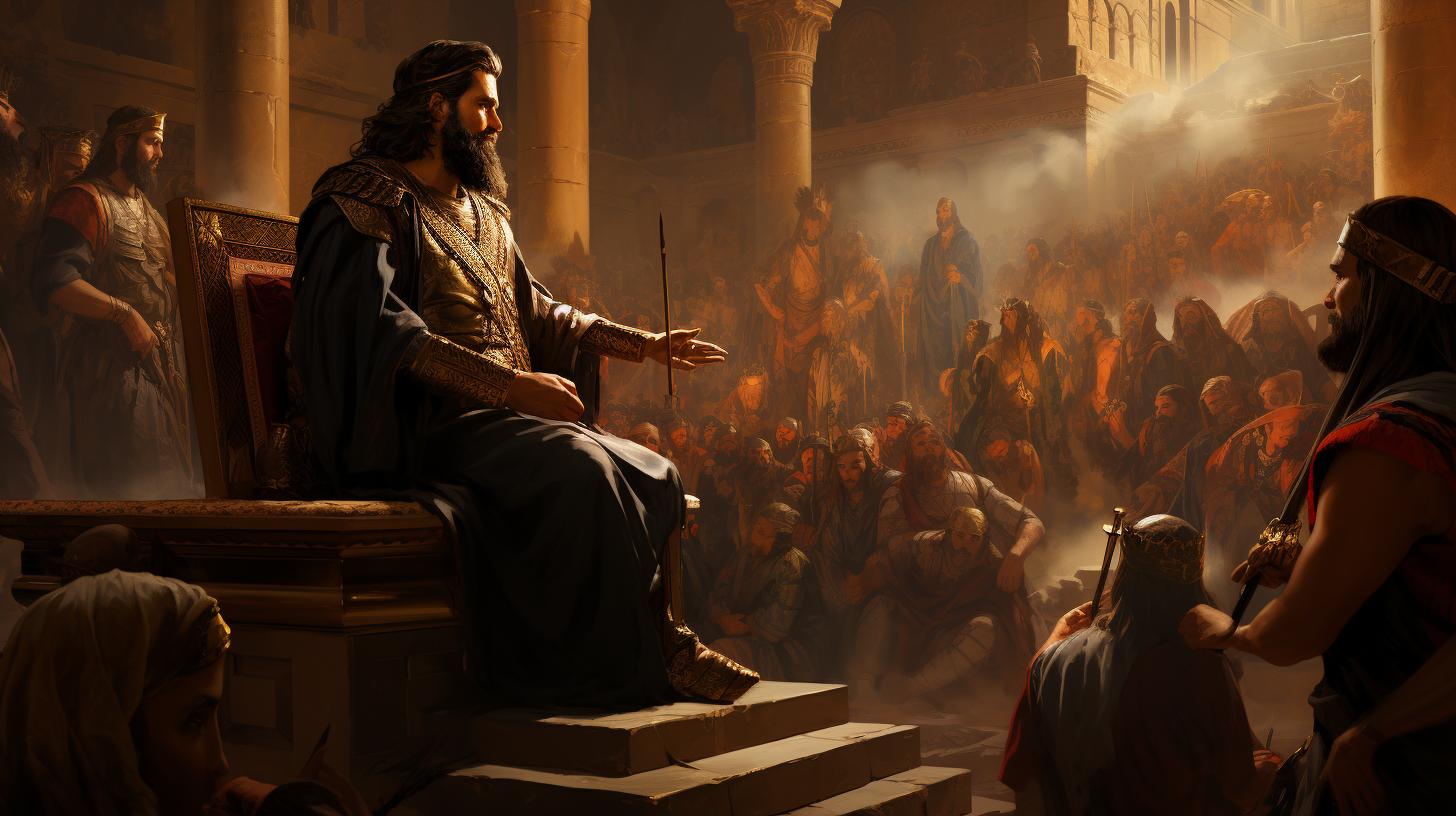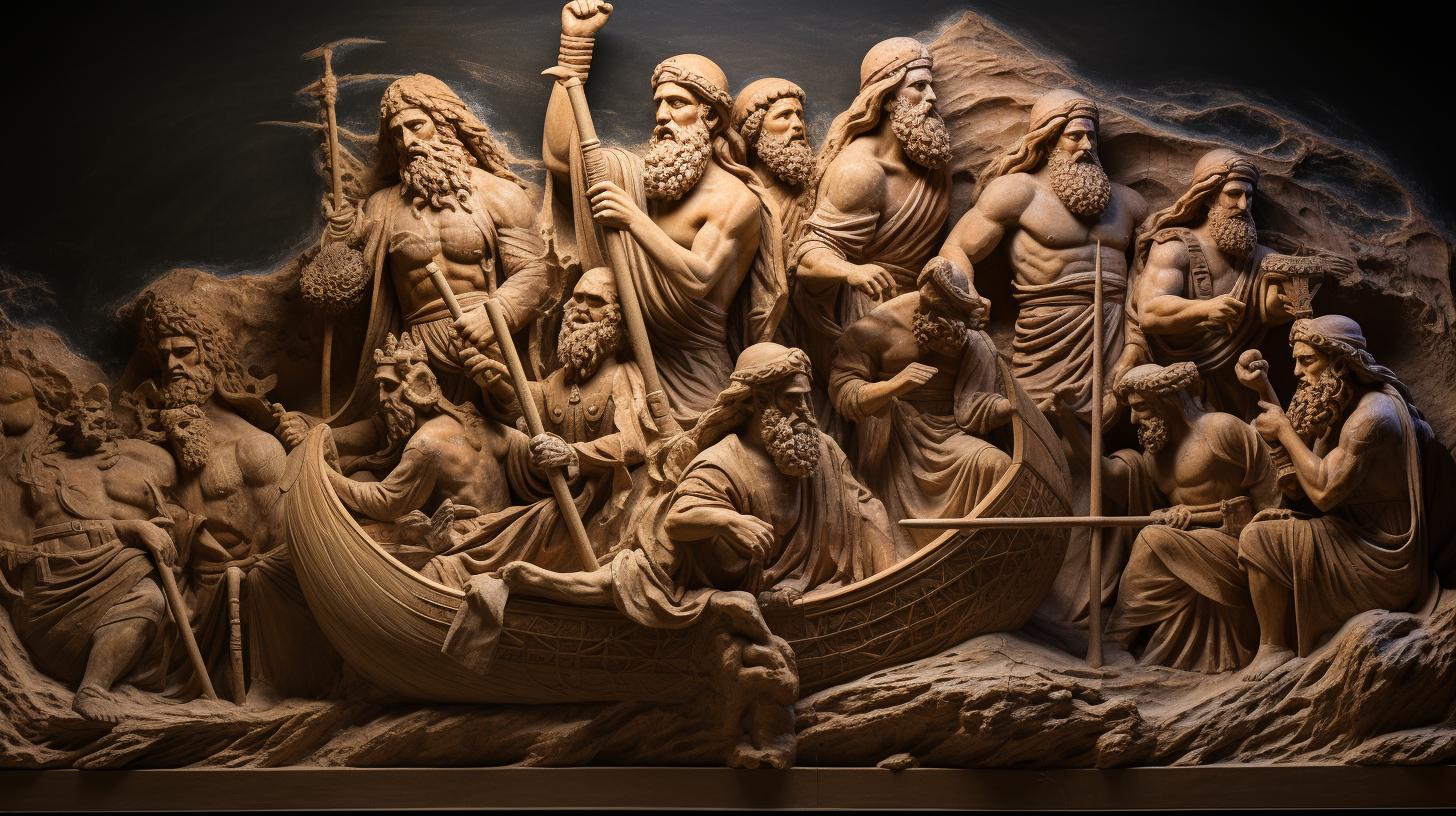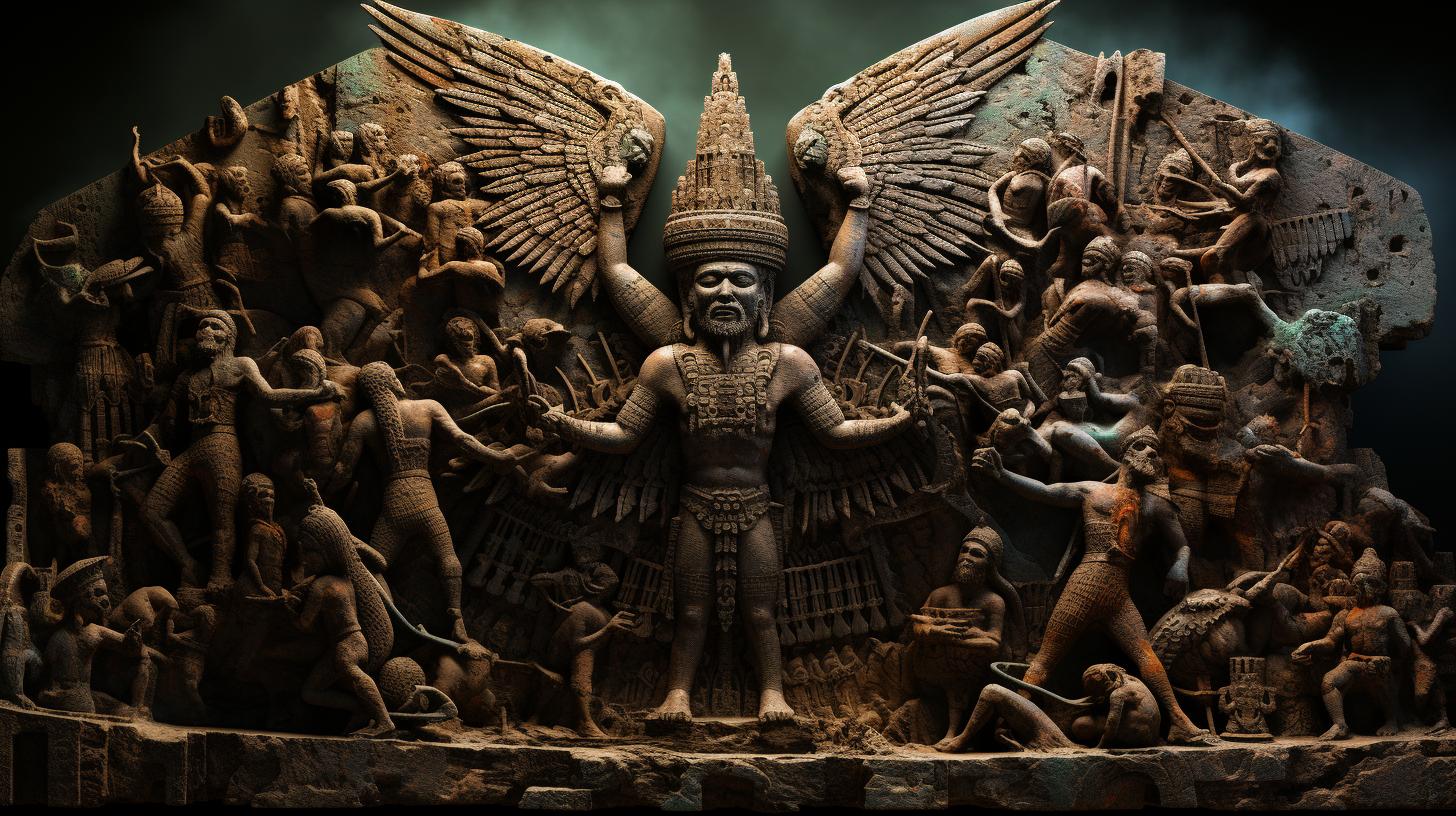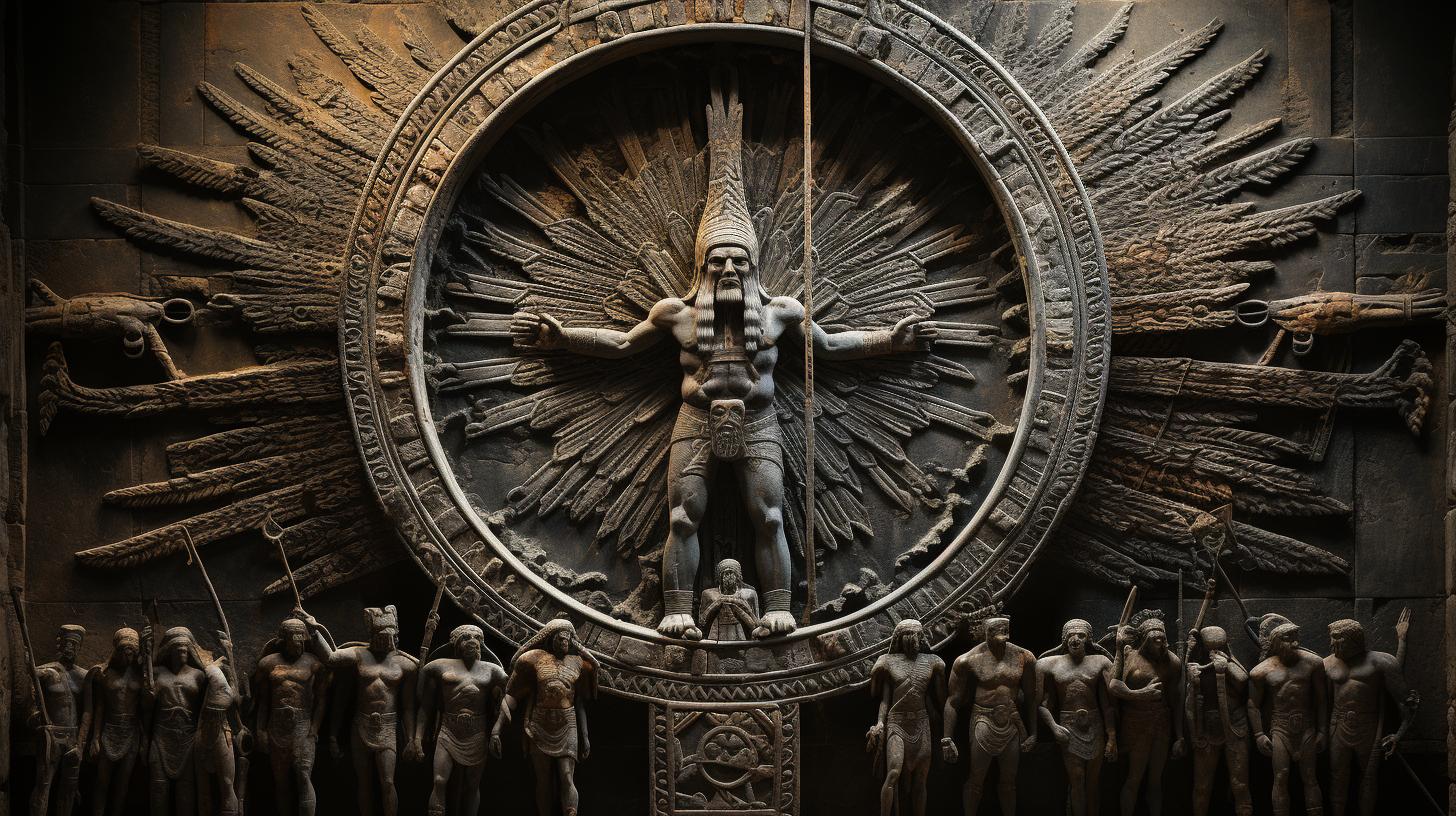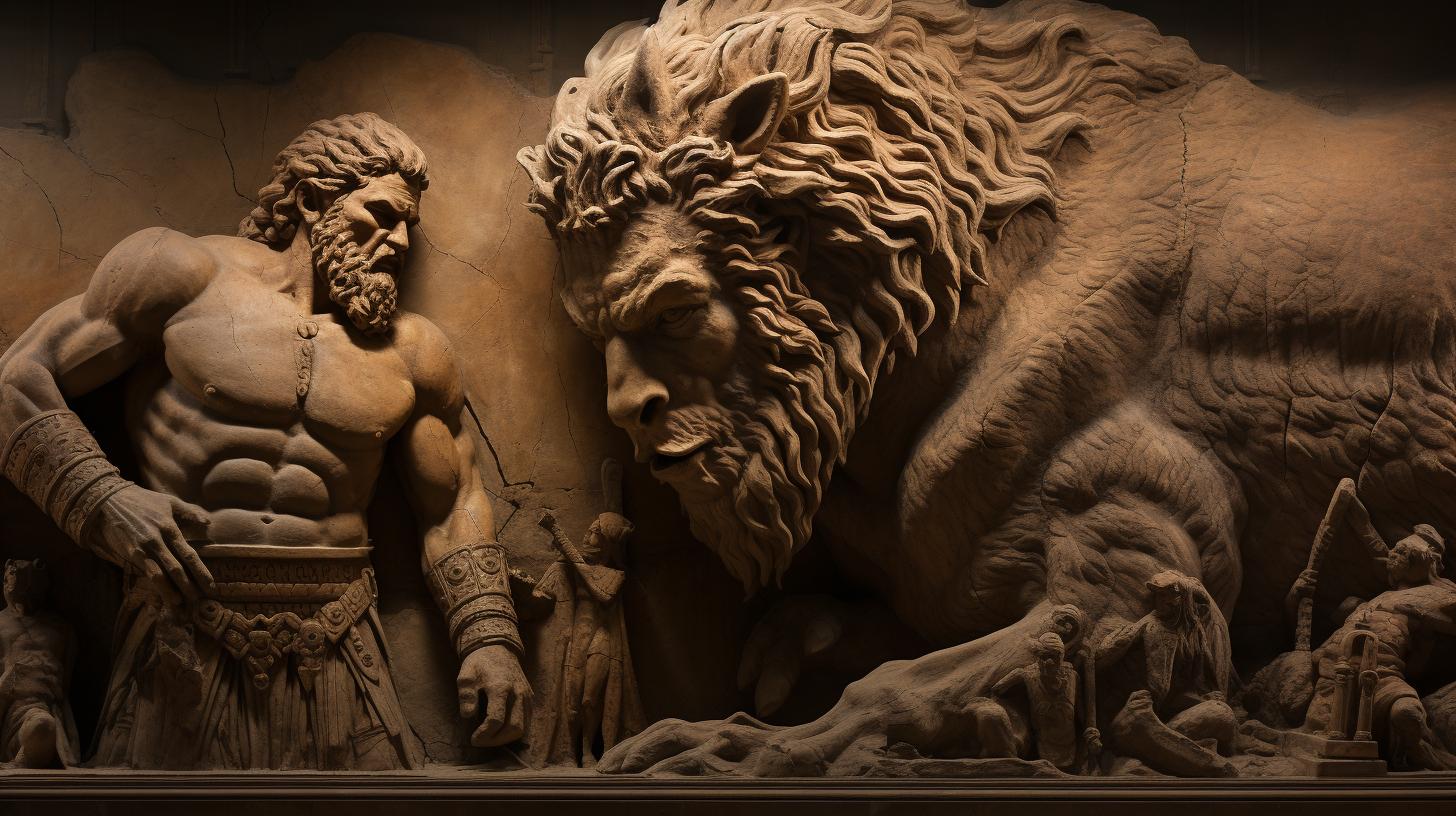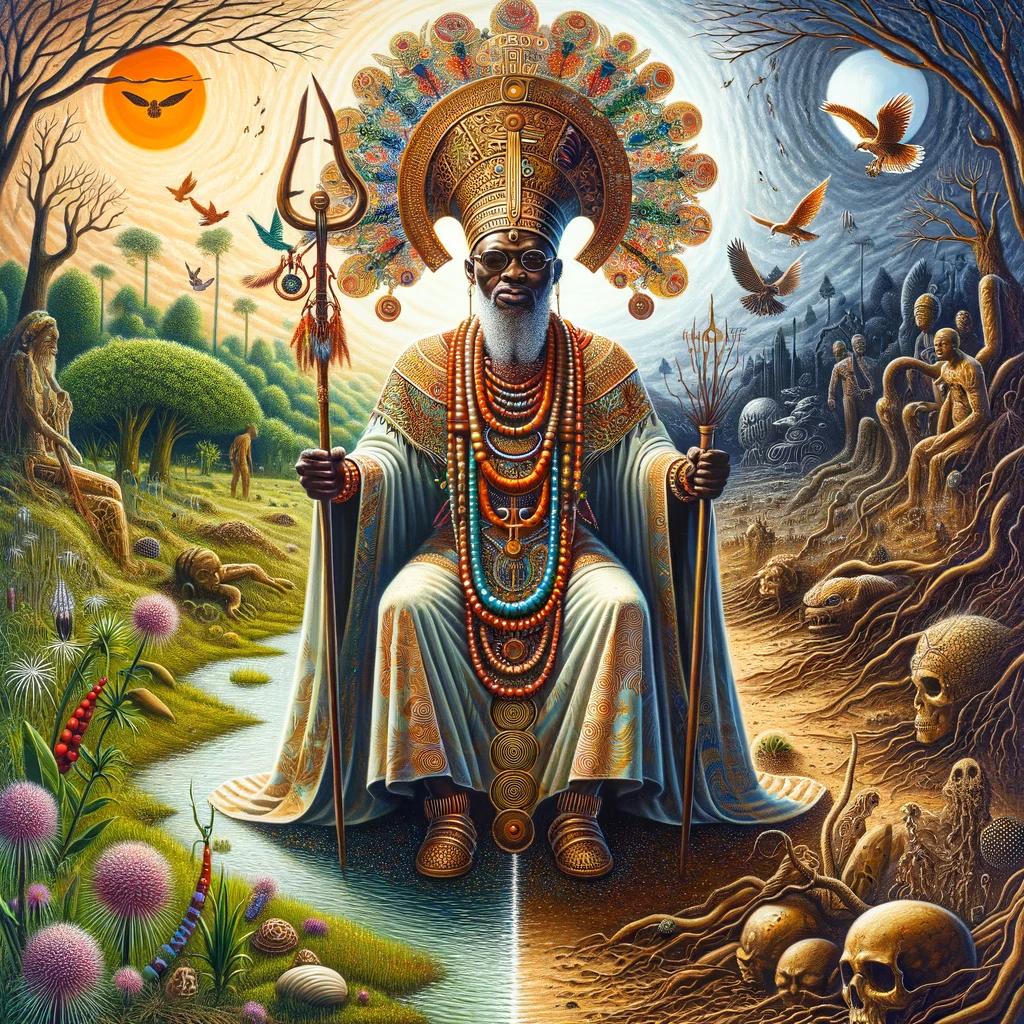Anshar and Kishar: The Twin Gods of Mesopotamian Mythology Explained
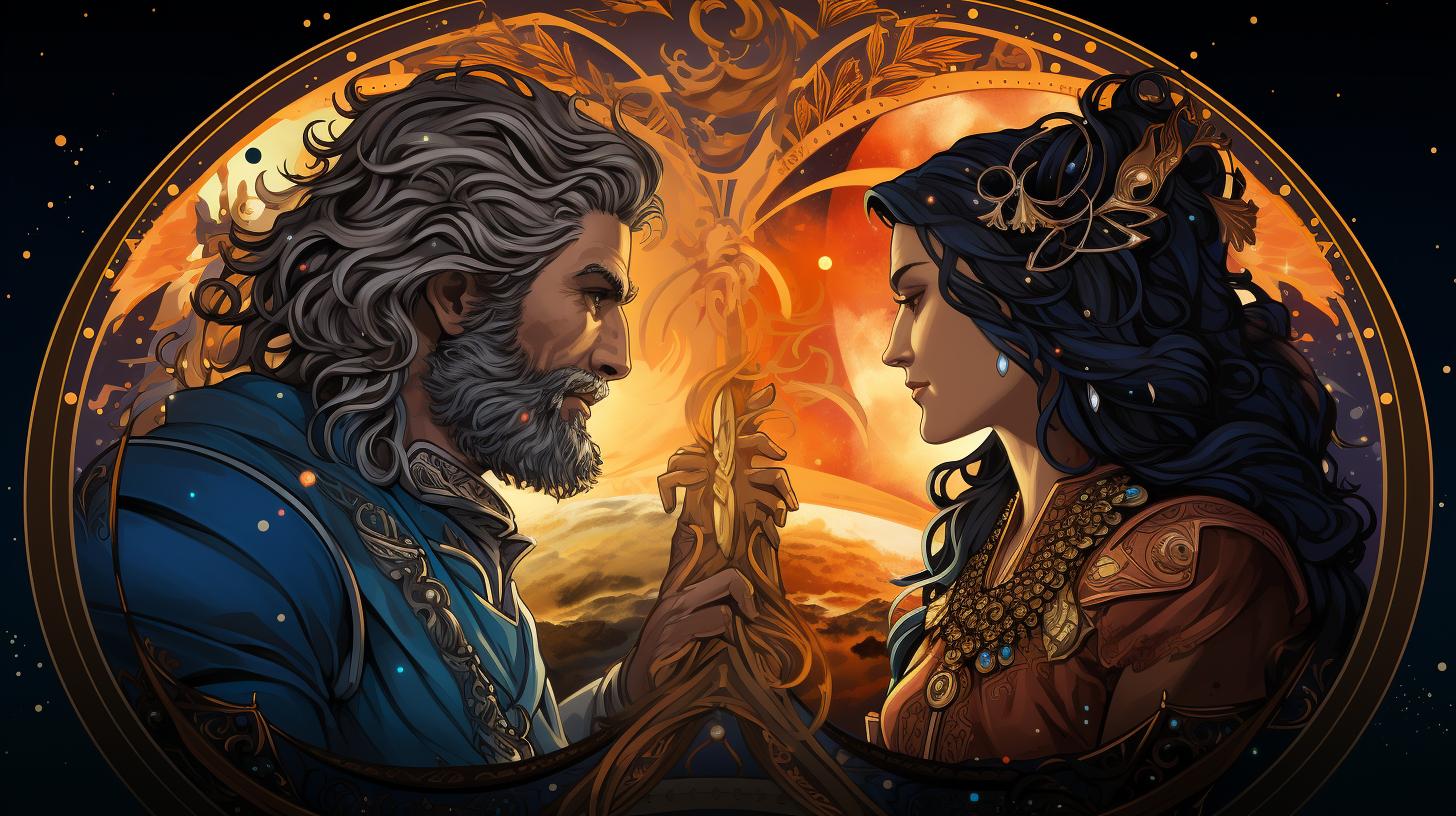
Anshar and Kishar are twin gods in Mesopotamian mythology, representing the horizons of the sky and earth. They are the offspring of Apsu and Tiamat, or possibly Lahmu and Lahamu.
Anshar, the primordial king of the gods, is associated with Anu, the supreme god of the sky. Kishar, the goddess of the entire earth, accompanies Anshar in mythological texts.
Their roles include participation in the defeat of Tiamat by Marduk and Anshar’s potential identification with Ashur in later Assyrian inscriptions. Despite their significance, there is no known iconography or evidence of specific places of worship dedicated to Anshar and Kishar.
The Origins of Anshar and Kishar
The ancient Mesopotamian gods, Anshar and Kishar, have intricate origins shrouded in myth and legend.
This section explores their parentage and an alternate theory regarding their origins.
Parentage of Anshar and Kishar
Anshar and Kishar are believed to be the offspring of Apsu and Tiamat, prominent gods in Mesopotamian mythology. As the twin horizons of the sky and the earth, they hold immense significance in the pantheon.
Lahmu and Lahamu: An Alternate Theory
However, an alternate theory suggests that Anshar and Kishar may be descendants of Lahmu and Lahamu, another divine couple in Mesopotamian mythology. This alternative lineage adds a fascinating layer to their origins.
Regardless of their specific parentage, Anshar and Kishar’s status as the twin gods of the sky and the earth remains integral to Mesopotamian mythology. Let’s delve deeper into their roles in the pantheon and their connections with other deities in the following sections.
Anshar and Kishar in Mesopotamian Mythology
In Mesopotamian mythology, Anshar and Kishar hold significant roles as twin gods. Anshar, known as the primordial king of the gods, occupies a central position in the mythological pantheon.
As the ruler of all gods, Anshar epitomizes the heavens and wields immense power. His name, meaning “whole earth,” suggests his vast dominion over the celestial realm. Although not actively worshipped, Anshar plays a crucial role in the genealogy of Anu, the supreme god of the sky.
He establishes a lineage that contributes to the defeat of the chaos goddess Tiamat by the hero Marduk.
The Role of Anshar as the Primordial King of the Gods
Anshar’s primary role in Mesopotamian mythology revolves around his status as the ruler of all gods. Regarded as the progenitor of Anu, Anshar ensures order and stability within the divine hierarchy.
His authoritative position signifies his importance in maintaining cosmic balance and acting as an intermediary between the celestial and earthly realms.
Kishar: The Goddess of the Entire Earth
Kishar, the counterpart to Anshar, is revered as the goddess of the entire earth. In Mesopotamian cosmology, she represents the fertile lands and the vast terrestrial expanse. As Anshar’s divine companion, Kishar embodies the harmonious union of heaven and earth.
Together, they symbolize the inseparable connection between the celestial and terrestrial domains, essential for the sustenance of life.
Connections with Other Mesopotamian Deities
Anshar and Kishar share intricate connections with other prominent Mesopotamian deities, indicating their involvement in divine affairs. Anu, the highest-ranking god, is both the son of Anshar and closely associated with him.
This association underscores Anshar’s influence on the pantheon, as his lineage leads to the ascension of Anu to the supreme position within the celestial hierarchy. Furthermore, Anshar’s role in supporting Marduk, the heroic deity who defeats Tiamat, reinforces his significance in the mythological narratives of the Mesopotamian cosmogony.
In conclusion, Anshar and Kishar play crucial roles within the realm of Mesopotamian mythology. Anshar’s position as the primordial king of the gods, coupled with Kishar’s status as the goddess of the entire earth, highlights their essential roles in maintaining cosmic order and connecting the celestial and terrestrial realms.
Their relationships with other deities further emphasize their significance within the rich tapestry of Mesopotamian mythology.
Anshar and Kishar in Mythological Texts
Anshar and Kishar play significant roles in Mesopotamian mythology, as described in various texts. Let’s explore their involvement in Anu’s genealogy, their participation in the defeat of Tiamat by Marduk, and Anshar’s representation as a logographic symbol for Anu.
Anshar’s Role in Anu’s Genealogy
Anshar holds a crucial position in the genealogy of Anu, the supreme god of the sky. He is considered the progenitor of Anu, acting as the gateway to the celestial realm.
Anshar’s association with Anu signifies his importance as a primordial deity and establishes his connection to the cosmic order.
Anshar’s Involvement in Tiamat’s Defeat by Marduk
Anshar also plays a role in the epic battle between the gods and the chaotic sea goddess Tiamat. He aligns himself with Marduk, the chief deity of Babylon, as they join forces to conquer Tiamat and bring order to the universe.
Anshar’s participation highlights his strength and strategic importance in overcoming primordial forces of chaos.
Anshar as a Logographic Representation of Anu
In some instances, Anshar is employed as a logographic representation of the name Anu, serving as a symbolic substitute. This usage denotes Anshar’s close association with Anu and exemplifies his divine attributes and authority.
It demonstrates the linguistic and cultural significance of Anshar as an intermediate representation within the Mesopotamian pantheon.
Identifying Anshar and Kishar with Ashur
Evidence of a Possible Relationship
In the realm of Mesopotamian mythology, there is intriguing evidence suggesting a potential relationship between Anshar and Kishar with Ashur. Although no direct connection has been established, inscriptions found in ancient Assyrian texts hint at a possible identification.
Some scholars propose that Anshar, the primordial king of the gods, may have been associated with Ashur in later periods to enhance the latter’s antiquity in the pantheon. This identification could be seen as an attempt to grant Ashur greater significance by linking him indirectly to the celestial lineage represented by Anshar.
Implications and Significance
If the identification of Anshar with Ashur holds true, it would offer intriguing insights into the evolving nature of Mesopotamian mythology over time. The assimilation of deities from different periods and regions into a unified pantheon reflects the complex dynamics of religious beliefs and the desire to establish continuity.
Additionally, the association of Anshar with Ashur could have political implications. Ashur was the patron god of the Assyrian Empire, and linking him to the ancient and revered Anshar may have served to strengthen the authority and legitimacy of the ruling Assyrian elite.
Worship and Iconography of Anshar and Kishar
Worship and iconography surrounding Anshar and Kishar in Mesopotamian mythology are relatively scarce. Despite their importance as the twin gods representing the horizons of the sky and the earth, there is a lack of dedicated places of worship specifically devoted to them.
Lack of Dedicated Places of Worship
Unlike many other major deities in Mesopotamian mythology, Anshar and Kishar do not seem to have had temples or cult centers dedicated solely to their worship. Their significance was often overshadowed by other gods, such as Anu and Marduk.
- Inscriptions and textual references generally focus more on their roles and relationships rather than their worship practices.
- There is no evidence suggesting the existence of specific rituals or ceremonies performed specifically in honor of Anshar and Kishar.
- It is possible that their worship was incorporated into broader rituals and festivals dedicated to other gods.
Absence of Known Iconography
Another notable aspect regarding Anshar and Kishar is the absence of known iconography depicting their physical forms.
Unlike many other Mesopotamian gods and goddesses, there are no surviving representations or images explicitly identified as Anshar or Kishar.
- The lack of visual depictions poses challenges in understanding their physical attributes and appearance.
- It is unclear whether Anshar and Kishar were anthropomorphized or represented symbolically in any form.
- Due to this absence of iconography, their visual characteristics and attributes remain largely unknown.
In conclusion, the worship and iconography of Anshar and Kishar in Mesopotamian mythology are shrouded in mystery.
The scarcity of dedicated places of worship and the absence of known iconography makes it challenging to fully comprehend the extent to which they were actively worshipped and depicted in ancient Mesopotamia.
Further research and archaeological discoveries may shed more light on these enigmatic twin gods.
.












